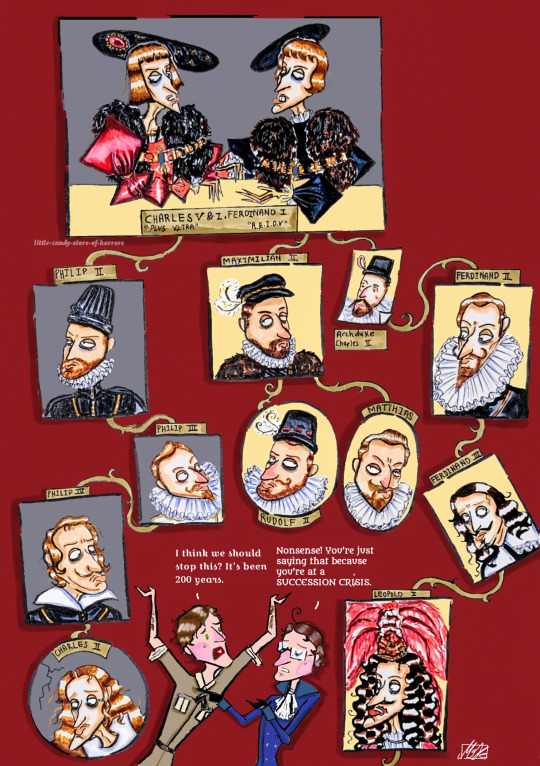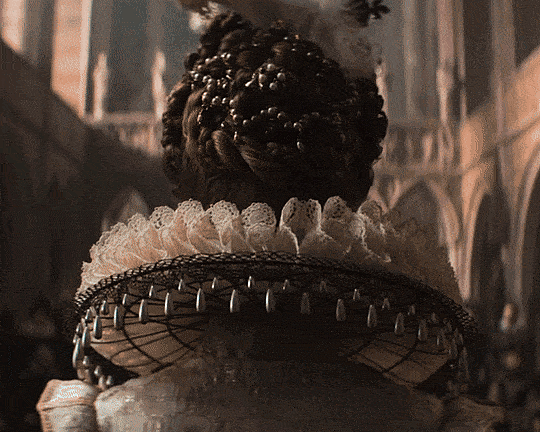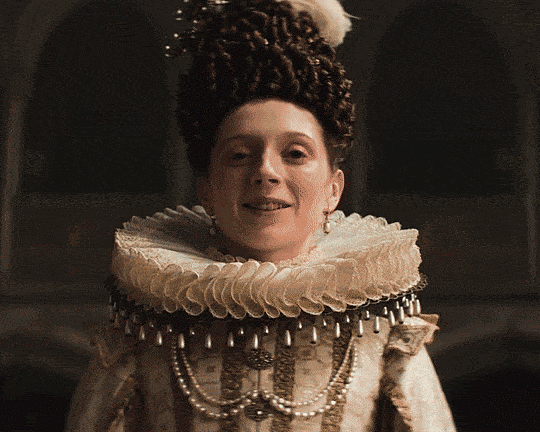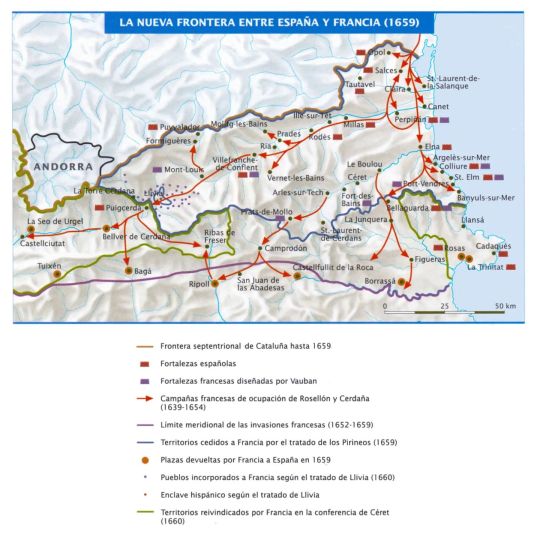#17th century spain
Explore tagged Tumblr posts
Text

Portrait of a Buffon
Artist: Juan van der Hamen y Leon (Spanish, 1596 - 1631)
Date: circa 1626
Medium: Oil on Canvas
Collection: Museo del Prado, Madrid, Spain
A sumptuously dressed and armed dwarf holds a ruler´s staff, an attribute of power that cannot have corresponded to his status. He was probably one of the court buffoons, who were showered with presents and dressed in ostentatious luxury. Since the sixteenth century, portraits of these figures were quite customary, although it was Velázquez who explored this genre with singular mastery. The date generally attributed to this extraordinary portrait indicates that the model might be Bartolillo, a dwarf whose presence in the Palace is documented between 1621 and 1626. Juan van der Hamen was best known for his excellent still lifes, although he also made religious paintings and portraits of high quality, like the present one. Notable here, besides the marked detail and tenebrist lighting, is the expressive strength of the protagonist, who is portrayed with enormous dignity and an expression that is practically defiant.
#portrait#spanish painter#17th century painting#spain#baton#command#men#17th century spain#juan van der hamen y leon
15 notes
·
View notes
Text

Portrait of Mariana of Austria
Artist: Diego Velázquez (Spanish, 1599-1660)
Genre: Portrait
Depicted People: Mariana of Austria, Queen of Spain
Date: 1652–1653
Medium: Oil on Canvas
Collection: Museo del Prado, Madrid
Portrait of Mariana of Austria is a 1652–1653 oil-on-canvas painting by Diego Velázquez, the leading artist of the Spanish Golden Age, existing in a number of versions. Its subject, Doña Mariana (known as Maria Anna), was the daughter of Emperor Ferdinand III and Maria Anna of Spain. She was nineteen years old when the painting was completed. Although described as vivacious and fun-loving in life, she is given an unhappy expression in Velázquez's portrait. The portrait is painted in shades of black and red, and her face is heavily made up. Her right hand rests on the back of a chair, and she holds a lace handkerchief in her left hand. Her bodice is decorated with jewelry, including a gold necklace, bracelets and a large gold brooch. A clock rests on scarlet drapery behind her, signifying her status and discernment.
Mariana had been betrothed to her first cousin, Prince Baltasar Carlos. He died in 1646 aged sixteen, and in 1649 she married her uncle, Baltasar Carlos's father, Philip IV, who sought her hand so as to preserve the hegemony of the Habsburg dynasty.[A] She became queen consort on their marriage, and after her husband's death in September 1665, regent during the minority of her son, Charles II, until he came of age in 1675. Owing to Charles' inhibiting physical weaknesses, she dominated the political life in Spain until her death in 1696.
#portrait#mariana of austria#queen of spain#diego velazquez#17th century art#spanish royalty#spanish culture#17th century spain#lace handkerchief#jewelry#gold necklace#bracelets#gold brooch#drapery#spanish monarchy#spanish nobility
12 notes
·
View notes
Text
The Birth of Charles II of Spain Fanart

Warning: This story contains some artistic license
The Queen's pregnancy was approaching its end and had become a matter of utmost importance. The future of the Monarchy depended on this event. On Sunday, November 6, everything seemed to be ready. The doctors and physicians were on alert; the Queen's confessor was near her, and the Chief Steward of her Household was carefully reviewing the arrangement of the items in the birth chamber. To guarantee the success of the event, all the holy relics that were in the Palace and others brought from El Escorial and other places had been arranged in order. There was the staff of Saint Dominic of Silos that the Order of Saint Dominic had brought, the ribbon of Saint John Ortega, from the Order of the Hieronymites; the incorrupt bodies of Saint Isidore and Saint Diego de Alcalá; the image of the Virgin of Solitude and the one so venerated by the royal family, Our Lady of Atocha. It is not easy to find a space so holy and sacred. Everything, then, was ready, the things of the earth arranged to implore God's pleasure. At noon, after a frugal lunch, Philip IV retired to his chambers. At the same time, While eating, Queen Mariana suddenly felt intense pain in her abdomen, realizing that she was about to give birth. She quickly left the table and hurried to the Tower Chamber.
King Philip went straight to his study while looking at Prospero’s portraits. He entered his study, sat down, and began to write to answer the last letter of Sor Maria de Agreda. He wrote with a deep sigh and tears in his eyes.
“ With the long illness of my son, and the continuous help I was giving in his room, I have not answered your letter of the last month...I assure you that what has most exhausted me, more than this loss, is to see clearly that I have vexed God and he sent this punishment to castigate my sins...
(The king reminisces his cherished memories with Felipe Prospero while writing this letter)
Help me as a friend with your prayers to placate God’s just anger and beg Our Lord that, as he took my son from me, He may make his light shine on the Queen, whose confinement we await hourly, and give her good health and guard what is to be born, if his will, for otherwise I do not wish it...
Back in the Tower Chamber, Queen Mariana cries in agony as she is delivering her baby. The royal midwife Ines Ayala told Queen Mariana to push harder. Five other doctors were present at this event in case of emergency. One of those doctors was Dr Bravo. While the Queen was giving birth, the courtiers and Infanta Margarita looked on.
Ah, Sor Maria, If I had succeeded in following your teachings, perhaps I would not have found myself thus. Pray to our Lord that he may open his eyes, that I may perform his holy will in all things... There is nothing new in the English situation. I, thank God am in good health...
At this point, King Philip was interrupted by a courtier who delivered the news and told the events occurring in the Tower Chamber. King Philip was anxious about the future that lay within a few hours. He prayed heavily to God, asking him to deliver him a son. All could imagine the impatience of the Royal Court of Madrid and Europe, waiting for an outcome of this event. As hours passed, Queen Mariana was still in labor, and the doctors argued over natural forms of treatment. They were anxious as the Queen and the child’s life was at stake.
Dr. Bravo proposed a theory: In the past, Queen Mariana had difficult experiences giving birth to her children. At the birth of Maria Ambrosia, Felipe Prospero, and Fernando Tomas, The Queen had terrible epileptic seizures, and the infants died or lived for a short time. On the other hand, at the birth of Infanta Margarita, the only child to survive, The Queen had been perfectly well. Now why was this? The reason is simple: Just before Infanta Margarita was born, Queen Mariana had suffered several violent nosebleeds. Therefore, what she requires now is to be bled.
Some doctors disagreed, warning that the proposed action could endanger the Queen and her child. Concerned, Queen Mariana asked the doctors if there were any alternative procedures. The doctors offered different opinions, while Dr. Bravo defended his proposal. As the debate continued, Mariana went into labor with the assistance of Ines Ayala. The infant cries and is alive. The birth of the infant brought joy to all. King Philip became a father once again. When the courtier informed King Philip of the birth, he was overjoyed and immediately visited the tower chamber to see his newborn son. King Philip joyfully held his son and proudly showed him to the Queen and his daughter. When the courtier informed King Philip of the birth, he was delighted and immediately visited the tower chamber to see his newborn son. King Philip joyfully held his newborn son and showed him to the Queen and his daughter.
Sources:
Carlos, A king who would not die by John Langdon Davis
Happy Birthday, Charles II of Spain!
#all I did is just combine these stories together#history#mariana de austria#spain#art#charles ii of spain#house of habsburg#17th century#habsburg#carlos ii#please like and reblog#my art#Mariana's art#happy late birthday#sorry it took me so long#my cute baby#margarita#margarita maria#philip iv#look at them#i love them so much#they are so cute#espana#kingdom of spain#madrid spain#monarquía española#spanish empire#baroque fashion#baroque#artists on tumblr
59 notes
·
View notes
Text

Felipe V of Spain (!!)
#sketch#doodle#17th century#bourbon anjou#house of bourbon#spanish monarchy#philip v of spain#digital art#historical art#historical figures#him being judgy k#kinda#artists on tumblr#royal history#18th century
55 notes
·
View notes
Text









Trying something new with #MiniatureMonday! Today's miniatures are from Ms. Codex 873, a notarized copy of baptismal, marriage, and property records of the Cosio Gomez family of Lores, Spain, dating from 1620 to 1795, with a petition to King Carlos IV to extend the title of the family to the heirs of Santiago de Cosio Gomez. Written in Palencia in northern Spain and finished on May 1, 1795, this little book is full of initials illustrated with miniatures of village scenes in the background. Delightful!
🔗:
#manuscript#17th century#18th century#spain#spanish#genealogy#initials#miniatures#miniature monday#village scenes#book history#rare books
35 notes
·
View notes
Text

ESTEBAN MURILLO, BARTOLOMÉ (hacia 1650) Inmaculada Concepción (La Colosal) [Óleo sobre lienzo] Museo de Bellas Artes de Sevilla, Sevilla, Andalucía, España
#art history#art#historia del arte#arte#painting#paintings#virgin mary#immaculate#catholiscism#cristianismo#catolicismo#catholic#seville#sevilla#spain#españa#17th cenutyr art#17th century art#17th century#siglo XVII
49 notes
·
View notes
Text

"Bella gerunt alii, tu felix Austria nube!"
Day 6 of @spaus-week 's challenge
"Let others wage war, you, happy Austria, marry!" Was the political strategy of the Habsburgs, and marry did the House of Austria! Infamously, scandalously, sensationally. A mangled wreath of a family tree. We all know this horror story. And we all know the bitter end.
After Emperor Charles V&I divided his Spanish and Austrian inheritance ((also gained through his parents' and grandparents' marriages)) to his descendants and those of his younger brother Ferdinand I respectively, the Habsburg dynasty split into two branches. The Spanish and Austrian Habsburgs notoriously intermarried for generations, right up till Charles II of Spain whose heirless death in 1700 sparked the War of the Spanish Succession. The inbreeding and this informal Latin motto behind it has been blamed to hell and back for their implosion, for the physical ugliness that ran in this royal bloodline. But it is not to say the Habsburgs never went to war, nor that dynastic marriage was a political strategy unique to them! But they were, if anything, bloody successful at it seeing how they did rule half of Europe for 200 years, and then a lot of it in the Austrian line for another 200. Before anyone figured out inbreeding was bad it was considered a privilege to marry into the Habsburgs, with Louis XV claiming that Louis XVI's betrothal to Marie Antoinette was marrying the "Daughter of the Caesars", and Napoleon Bonaparte infamously ditching Josephine for Marie Louise. Charles II was a poor sod who took the fall and the mugs were wretched from the same ugly gene being passed around countless times*, but they did wear power and privilege well.
💅✨ Symbolism bc I'm a NERD and this my Category 10 autism event ✨💅 :
Charles V & Ferdinand I's joint portrait based on that propaganda woodcut, behind them the colours of the Habsburg flag.
The Spanish branch, comprising Charles V & I's descendants, is represented with a black background, and the Austrian branch, comprising Ferdinand I's descendants, gold, both colours pulled from their flag, a dynasty intertwined but split in two.
Round frames denote that the individual had no heirs.
Only the most influential ruler on both sides, the King of Spain and the Holy Roman Emperor, are represented as framed portraits, explaining Archduke Charles II's unframed depiction.
The unconventional placement of Charles II of Spain and Emperor Rudolf II's nameplates are a nod to their queerness: their intersexuality and bisexuality respectively.
Ferdinand III's portrait is lopsided because of the losses of the 30 Years War.
Cracks in Charles II's portrait: 🙃🙃🙃
#Was this just an excuse for me to draw the family tree/wreath? YES. Might continue it to Blessed Karl™ *faints*.#That said i literally took three tries to get the Austrian branch right in just this fraction. Nightmare.#spausweek#Charles v#philip ii#philip ii of spain#Philip iii#philip iv of spain#felipe iv#charles ii of spain#Carlos ii#ferdinand i#Maximilian ii#rudolf ii#Emperor Matthias#Ferdinand ii#Ferdinand iii#Leopold i#16th century#17th century#habsburg history#house of habsburg#austrian history#spanish history#historical hetalia#aph austria#aph spain#roderich edelstein#Antonio Fernandez#Hetalia
69 notes
·
View notes
Text

I was looking for something else, but I ended up downloading this Spanish tailoring book from the Biblioteca Digital Hispánica from 1618 (!!!!!), and after a song and some licences from the King and thank yous to Don Andrés Roig, and the note that the book does not contain anything against the Catholic faith, the book starts with the description of measurements for fabrics: la bara de medir.
Of course it has PAGES of the ways a bara can be divided, notes for how many fingers are half a palm (6 fingers), and other divisions and measurement. If you know Spanish, you can read the first page up here and the way it is signaled later in the book for the patterns like this one of a doublet:

I love the way it is explained that you can cut a garment in different ways for different widths of fabric, in this case the first option of for a fabric of one bara and 6 fingers (these appear in the first page up here), the second 1 bara and a forth, and the third is 1 bara, a forth, an ochavo (6 fingers) and 1 finger:

Weird way to measure, but sure, we all can move our patterns with this nice guide.
All images from the book "Geometría y Traça Perteneciente al Oficio de Sastres", (1618), Rocha Burgen, Francisco, Biblioteca Nacional de España.
39 notes
·
View notes
Text




Aine Mcnamara as Maria Anna of Spain
Mary & George 1.07
62 notes
·
View notes
Text

Portrait of the Infanta Maria Theresa of Spain (c. 1653) by Diego Velázquez. Kunsthistorisches Museum.
#diego velazquez#diego velázquez#velazquez#17th century#17th century art#17th century painting#17th century fashion#renaissance#spain#españa#kunsthistorisches museum#vienna#wien#austria#österreich#habsburgs#european royals#spanish art#spanish painter#female portrait#painting#female portrayal#europe#european art#historical fashion#fashion#1650s#art history#european royalty
33 notes
·
View notes
Text

Painted dish. Talavera, 1651-1675
--------
Plato pintado. Talavera, 1651-1675
Pasta cerámica
Museo Nacional de Artes Decorativas, CE00019
26 notes
·
View notes
Text

An early 17th century naval action in the long history of warfare between Spain and the Netherlands, by Oswald Walters Brierly (1817-1894)
80 notes
·
View notes
Photo

The new border between Spain and France, 1659.
via cartesdhistoire
Source: “Atlas de Historia de España”, Fdo García de Cortázar, Planeta, 2005
Within the framework of the Thirty Years' War, France declared war on Spain in May 1635. Starting in 1639, the French army invaded Roussillon, beginning with the occupation of the fortress of Salses. Richelieu fueled the revolt of the Catalans against Philip IV (started in June 1640), granting the insurgent leaders and troops the protection of French sovereignty (recognized by the insurgents in January 1641). Catalonia's return to Spanish obedience was effective only in October 1652 when Barcelona surrendered.
The fatigue produced by the French occupation, whose army was as burdensome or more burdensome than the Spanish and whose policy was more absolutist and inconsiderate than that of Olivares, alienated the population from the French, but Richelieu's move later served Louis XIV.
Indeed, the Peace of Westphalia (1648) did not put an end to the Franco-Spanish War, which ended with the defeat of Las Dunas (June 14, 1658). June 25, 1658, was the “folle journée” of neighboring Dunkirk: the city, Spanish in the morning, was taken by the French at noon and they handed it over to their ally England in the afternoon (it will be definitively French in 1662) .
The Peace of the Pyrenees (November 1659) meant the loss of Roussillon and Upper Cerdanya, with the establishment of the "dean border of Europe" between France and Spain. It also meant the definitive end of Spanish hegemony. On the other hand, one of the clauses of the treaty, which agreed to the marriage of Louis by a financially exhausted country), would later justify French interventionism in the Netherlands and, above all, would pave the way for the Spanish Crown to fall at the end of the century to the Bourbons, the current reigning dynasty in Spain.
50 notes
·
View notes
Text

Mariana of Austria and Margarita Theresa Fanart
Be warned as some events I wrote had some artistic license.
On the morning of September 17, 1665, the bells tolled throughout the city. Jose Everardo Nithard immediately went to the Queen's chambers. Upon hearing the bells, Queen Mariana awoke and asked what was happening. The courtiers present kissed her hand. Nithard approached her and informed her that the king had passed away. The Queen began to shed a tear but kept her composure. She began to change her wardrobe from extravagant to a simple, rigid mourning dress, with the only adornment on her finger being her wedding ring. Surgeons and attendants were cleaning and embalming the king’s body while a mass was recited at the head of the royal bed. Margarita Theresa, dressed in mourning attire, approached Mariana, hugged her, and wept excessively. Mariana began to cry as she comforted her daughter.
Source: Queen, Mother, and Stateswoman Mariana of Austria and the Government of Spain by: Silvia Z. Mitchell
#I forgot that Felipe's death anniversary was last month#sorry#history#my art#my fanart#historical figures#historical fanart#baroque period#mariana de austria#house of habsburg#habsburg#carlos ii#art#17th century#please like and reblog#spain#mother and child#princess#underrated queen#mourning outfit#tw death#look at them#i love them#they are so cute#ahhhhhh#They are in mourning#so sad </3#margarita maria
59 notes
·
View notes
Text

chares ii of spain my babyy i want to ruffle his hair and kiss him on the forehead–
#digital art#sketch#doodle#charles ii of spain#house of habsburg#habsburg history#original art#artists on tumblr#historical figures#17th century#he's so fun to draw#carlos ii
54 notes
·
View notes
Text

Allegorical Portrait of Anna of Austria as Minerva
Artist: Simon Vouet (French, 1590–1649)
Date: 1643-1650
Medium: Oil on Canvas
Collection: Hermitage Museum, Saint Petersburg, Russia
Anna of Austria, Queen of Spain
Anna of Austria (2 November 1549 – 26 October 1580) was Queen of Spain by marriage to her uncle, King Philip II of Spain. During her last days of life she was also briefly Queen of Portugal.
She was born in Spain during the reign of her maternal grandfather, Charles V, Holy Roman Emperor, but lived in Vienna from the age of four. Anna was considered her father's favorite child. The story goes that he enjoyed playing and gambling with her and once a meeting of the Diet of Hungary was postponed because Anna was sick. She received a Catholic education.
#portrait#anna of austria#allegory#minerva#simon vouet#french painter#european#17th century painting#oil on canvas#hermitage museum#landscape#wreath#classic buildings#costume#goddess#helmet#queen of spain#spanish monarchy
11 notes
·
View notes